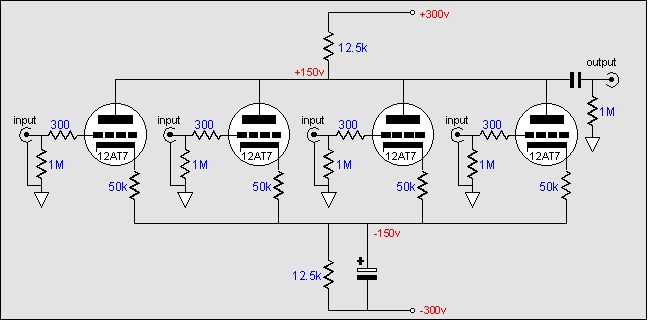Hello!
Ezequiel from Argentina.
i have some UTC A10 ,about 8, and want to build a tube mixer, just volume and pan, 8x2, no eq, no sends, no inserts.i also have 2 UTC A20, i think this ones could be used for the stereo balanced output.
i need to know how to make a stereo buss for summing the 8 channels after volume control, and if with the UTC A10 will have only mic input or both mic-line?
Thank you!
Ezequiel from Argentina.
i have some UTC A10 ,about 8, and want to build a tube mixer, just volume and pan, 8x2, no eq, no sends, no inserts.i also have 2 UTC A20, i think this ones could be used for the stereo balanced output.
i need to know how to make a stereo buss for summing the 8 channels after volume control, and if with the UTC A10 will have only mic input or both mic-line?
Thank you!





